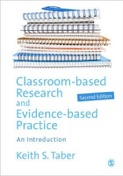Educational Research Methods

A site to support teaching and learning...

Clinical interviews
Clinical interviews became well known as a research method (technique) after they were adopted by Jean Piaget.
Piaget introduced the method of clinical interviews for his work exploring children’s conceptual levels and development - such that “each child’s thought patterns are traced by a series of questions,
each being dependent upon the previous response given by the child” (Brown, 1977, p.89)
Brown, G. (1977). Child Development. London: Open Books.
Piaget explained this method had elements of experiment and observation:
“We shall use a ... method which claims to unite what is expedient in the methods of test and
of direct observation, while avoiding their respective disadvantages: this is the method of clinical examination, used by psychiatrists as a means of diagnosis...
… The clinical examination is thus experimental in the sense that the practitioner sets himself a problem, makes hypotheses, adapts the conditions to them and finally controls each hypothesis by testing it against the reactions he stimulates in conversation.
…But the clinical examination is also dependent on direct observation, in the sense that the good practitioner lets himself be led, though always in control, and takes account of the whole mental context, instead of being the victim of 'systematic error' as so often happens to the pure experimenter”
(Piaget, 1929/1973, p.19)
Piaget, J. (1929/1973). The Child’s Conception of The World (J. Tomlinson & A. Tomlinson, Trans.). St. Albans: Granada.
This is a personal site of Keith S. Taber to support teaching of educational research methods.
(Dr Keith Taber is Professor of Science Education at the University of Cambridge.)
2016
